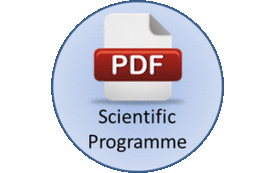
Vanessa Elisa Pinheiro
Universidade de São Paulo, Brazil
Title: Mixture design of wastes hydrolysis by amylase, xylanase and cellulase rich extracts
Biography
Biography: Vanessa Elisa Pinheiro
Abstract
The depletion of fossil fuels, costs and pollution have stimulated the search for alternative energy sources. The production of biogas from wastes is an alternative that contributes to the environment preservation and minimizes the dependence on fossil energy sources. Nevertheless, the use of lignocellulosic biomass through the anaerobic pathway of organic matter degradation usually requires a pretreatment, which leads to the solubilization of sugars and the removal of lignin. Thus, this study aimed to show which selected wastes (barley bagasse, sugar cane bagasse, elephant grass, thick orange pie, average orange pie, wheat bran, coffee grounds, orange peel, white sludge, vinasse, corn bran, soy bran, soy peel, cotton bran, cassava husk, cassava flour, banana peel, corn straw, sorghum stem, sorghum seed, entire plant sorghum and wet distiller grain) were the most hydrolyzable by amylase secreted by Aspergillus brasiliensis, A. tamarii Kita xylanase and cellulase from Trichoderma reesei, Novozymes®. Later on, it was studied mixtures between these enzymes using simplex-centroid designs. The most hydrolyzed waste by each enzyme separately applied and measured by DNS method at 50°C, 120rpm and incubation for 24hours were corn bran, banana peel, and sorghum seed. The simplex-centroid designs resulted in model equations and respective response surface contours. Amylase extract had a significant positive influence on corn bran, maximizing the reducing sugar yields when it was singly used. However, in all the three waste treatments, interactions between the three enzymatic extracts can be seen. These interactions were synergic or antagonistic depending on the treatment. In conclusion, it was observed that the enzymes significantly affect the waste hydrolyzes, applying either separately or in a consortium.

